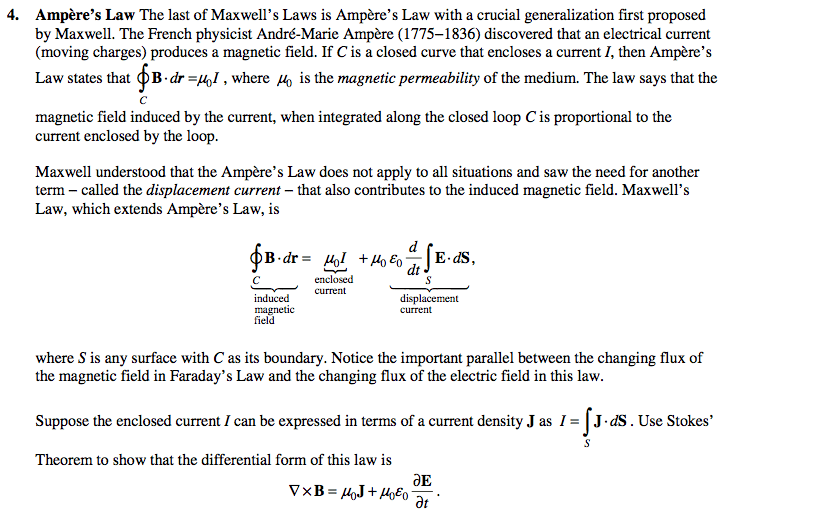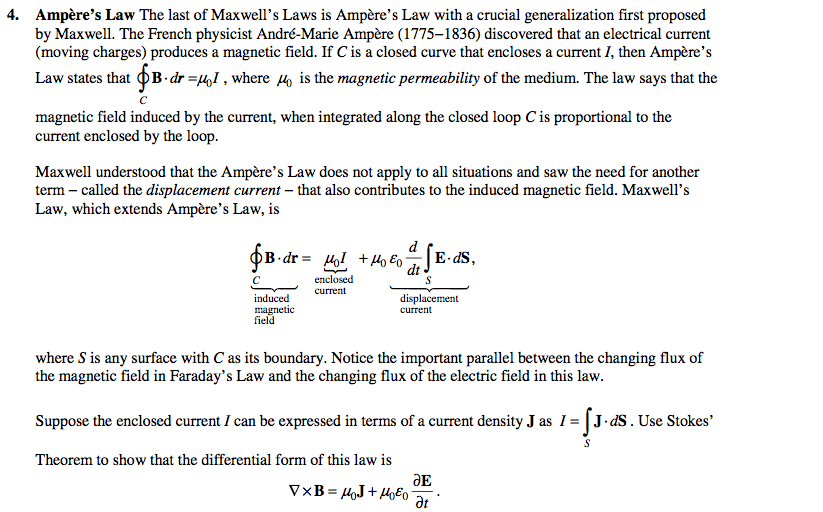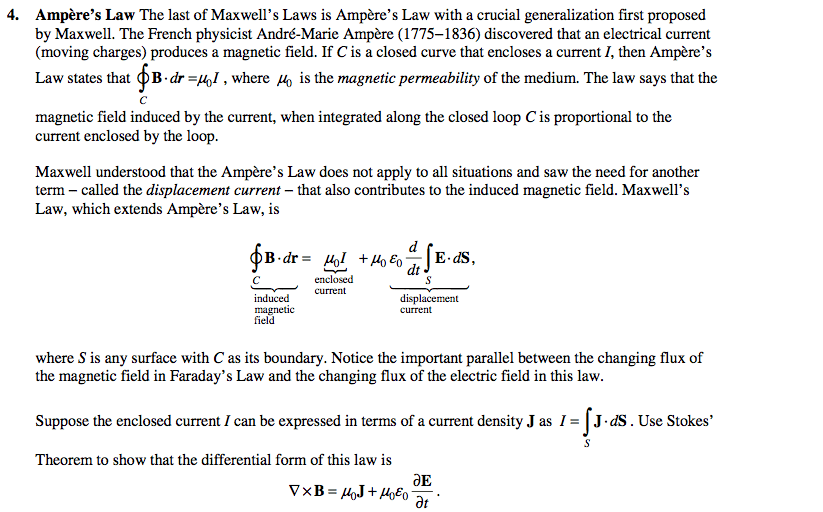BACHELOR OF SCIENCE : 5 Electricity and Magnetism UNIT 5 FULL NOTES

Electricity and Magnetism UNIT 5 FULL NOTES
Magnetic Field
Table of contents
(1) . Displacement vector D.
(2) Working of Electric Displacement.
(3) Equation for Electric Displacement
(4) How Electric Displacement is becoming a Vector Quantity
(5) Relation between polarization vector (P), displacement (D) and electric
field (E)
(6) Magnetic force between current elements
(7) Biot-Savart Law
(8) Explain Biot-Savart Law
(9) Derivation of Biot-Savart Law.
(10) Current Loop as a Magnetic Dipole and its Dipole Moment
(11) Ampere’s Circuital Law
(12) Ampere’s Circuital Law application Solenoid
(13) Properties of B: curl and divergence
(14) magnetic vector potential
(15) Mathematical derivation of vector potential
(16) Magnetic force on a free moving charge
(17) Magnetic force on a current-carrying wire
(18) Magnetic Force between current elements
(19) Torque on a current loop in a uniform Magnetic Field.

Displacement vector D
In physical science, the electric displacement, otherwise called dielectric
displacement and as a rule signified by its most memorable letter D, is a vector
field in a non-leading medium, a dielectric. The displacement D is corresponding
to an outside electric field E where the dielectric is set.
Therefore, it applies to free electric charges, accordingly wiping out the
association of charges present in particles or impartial molecules. It works
primarily in light of the fact that an electric field exists between two uncharged
conductors when charge moves through them.
Thus, one of the conductors attains a positive charge, while the other has a
negative charge. This, prompts the production of an electric field between these
conductors this idea, accordingly, expects to find the free-charge surface
thickness. Besides, it connects with the volume of free charge on one guide,
concerning the surface region of this guide.
Working of Electric Displacement
Electric Displacement hence computes the thickness of electric flux inside a
charged field. However, it considers the occasion when you bring a dielectric into
the device. You should take note of; a dielectric alludes to an insulating material
that misses the mark on free or loosely bound electrons.
Thus, they neglect to require the development of free electric charges along their
surface area. Be that as it may, assuming that you introduce an insulated article
between an electric field, it observes a level of polarization. It is on the grounds
that the emphatically bound negative charges move slightly towards the positive
conductor
Then again, bound positive charges move by a specific extent towards the
negative plate. This peculiarity brings about a general decrease in the electric
field. In this way, Electric Displacement ventures to find responses of dielectric
materials as they really come in contact with electric fields.
Equation for Electric Displacement

First of all, note that 'D' represents Electric Displacement. Then again, 'E' refers to
the electric field that comes into the inquiry.
However, you must investigate the accompanying table to grasp different parts of
this equation
Therefore, the equation to find the Electric Displacement in a dielectric material is
D = ε0E + P in this ε0 is the vacuum permeability D is electric displacement E is the
electric field P is the density of polarization
C m-2 or Coulomb per meter square is the standard measuring unit for electric
displacement In this unit, Coulomb stands for the unit of electric charge,
whereas m-2 is the area of the material.
How Electric Displacement is becoming a Vector Quantity
At the point when you present a dielectric material inside an electric field, it goes
through a change in the electron cloud of the free electrons. Therefore, it is
known as a dipole. The negative and positive charge in the dielectric shows a
partiality towards positive and negative plates, separately.
Therefore, they travel in specific directions along a specific line. The Electric
Displacement vector accordingly gauges the dielectric polarization vector.
In this manner, Electric Displacement thickness properly gauges the vector motion
of electric thickness in a given dielectric material. Then again, its unit in the
meter-kilogram-second system is Coulombs per meter square or C m-2.
Relation between polarization vector (P), displacement (D) and electric field (E)
The effect on dielectric placed in an external electric field E0 and there will be
electric field due to polarized charges, this field is called electric field due to
polarization (Ep)
Rewrite equation (A) of that article, that is:
E = E0 – Ep ………. (A)
Document Summary
Properties of b: curl and divergence magnetic vector potential. In physical science, the electric displacement, otherwise called dielectric displacement and as a rule signified by its most memorable letter d, is a vector field in a non-leading medium, a dielectric. The displacement d is corresponding to an outside electric field e where the dielectric is set. Therefore, it applies to free electric charges, accordingly wiping out the association of charges present in particles or impartial molecules. It works primarily in light of the fact that an electric field exists between two uncharged conductors when charge moves through them. Thus, one of the conductors attains a positive charge, while the other has a negative charge. This, prompts the production of an electric field between these conductors this idea, accordingly, expects to find the free-charge surface thickness. Besides, it connects with the volume of free charge on one guide, concerning the surface region of this guide.






